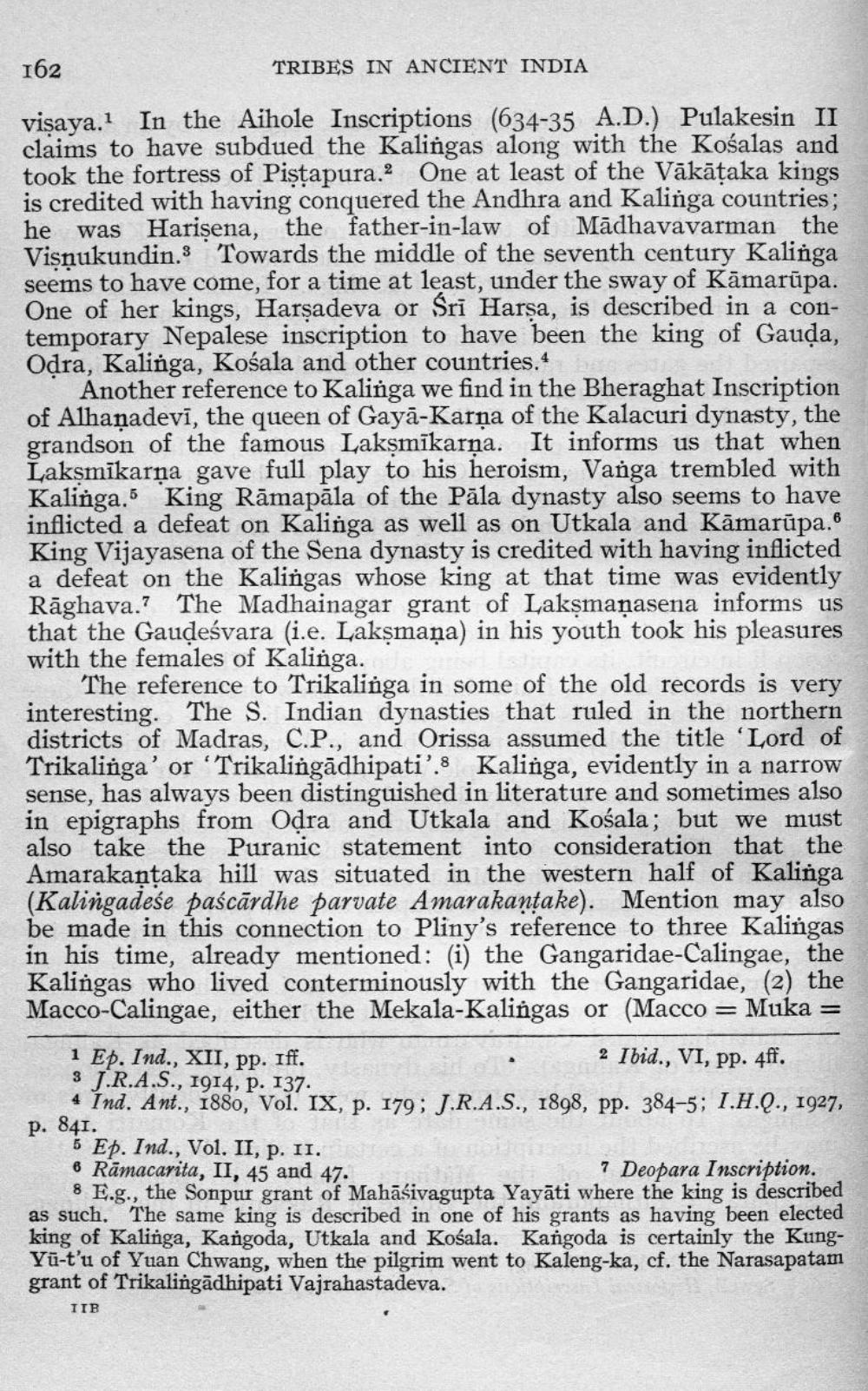________________
162
TRIBES IN ANCIENT INDIA
visaya.1 In the Aihole Inscriptions (634-35 A.D.) Pulakesin II claims to have subdued the Kalingas along with the Košalas and took the fortress of Pistapura. One at least of the Vākāțaka kings is credited with having conquered the Andhra and Kalinga countries; he was Harisena, the father-in-law of Madhavavarman the Visnukundin.3 Towards the middle of the seventh century Kalinga seems to have come, for a time at least, under the sway of Kāmarūpa. One of her kings, Harsadeva or Sri Harsa, is described in a contemporary Nepalese inscription to have been the king of Gauda, Odra, Kalinga, Kośala and other countries. 4
Another reference to Kalinga we find in the Bheraghat Inscription of Alhaņadevī, the queen of Gayā-Karņa of the Kalacuri dynasty, the grandson of the famous Laksmīkarna. It informs us that when Laksmīkarņa gave full play to his heroism, Varga trembled with Kalinga. King Rāmapāla of the Pāla dynasty also seems to have inflicted a defeat on Kalinga as well as on Utkala and Kāmarūpa.6 King Vijayasena of the Sena dynasty is credited with having inflicted a defeat on the Kalingas whose king at that time was evidently Rāghava.? The Madhainagar grant of Laksmanasena informs us that the Gaudeśvara (i.e. Lakşmaņa) in his youth took his pleasures with the females of Kalinga.
The reference to Trikalinga in some of the old records is very interesting. The S. Indian dynasties that ruled in the northern districts of Madras, C.P., and Orissa assumed the title 'Lord of Trikalinga' or 'Trikalingādhipati'.8 Kalinga, evidently in a narrow sense, has always been distinguished in literature and sometimes also in epigraphs from Odra and Utkala and Kośala; but we must also take the Puranic statement into consideration that the Amarakanțaka hill was situated in the western half of Kalinga (Kalingadese paścārdhe parvate Amarakantake). Mention may also be made in this connection to Pliny's reference to three Kalingas in his time, already mentioned: (i) the Gangaridae-Calingae, the Kalingas who lived conterminously with the Gangaridae, (2) the Macco-Calingae, either the Mekala-Kalingas or (Macco = Muka = 1 Ep. Ind., XII, pp. Iff.
• 2 Ibid., VI, pp. 4ff. 3 J.R.A.S., 1914, p. 137.
4 Ind. Ant., 1880, vol. IX, p. 179; J.R.A.S., 1898, pp. 384-5; 1.H.Q., 1927, p. 841.
5 Ep. Ind., Vol. II, p. II. 6 Rāmacarita, II, 45 and 47.
7 Deopara Inscription. 8 E.g., the Sonpur grant of Mahāśivagupta Yayāti where the king is described as such. The same king is described in one of his grants as having been elected king of Kalinga, Kargoda, Utkala and Kośala. Kangoda is certainly the KungYü-t'u of Yuan Chwang, when the pilgrim went to Kaleng-ka, cf, the Narasapatam grant of Trikalingādhipati Vajrahastadeva.
IIB




